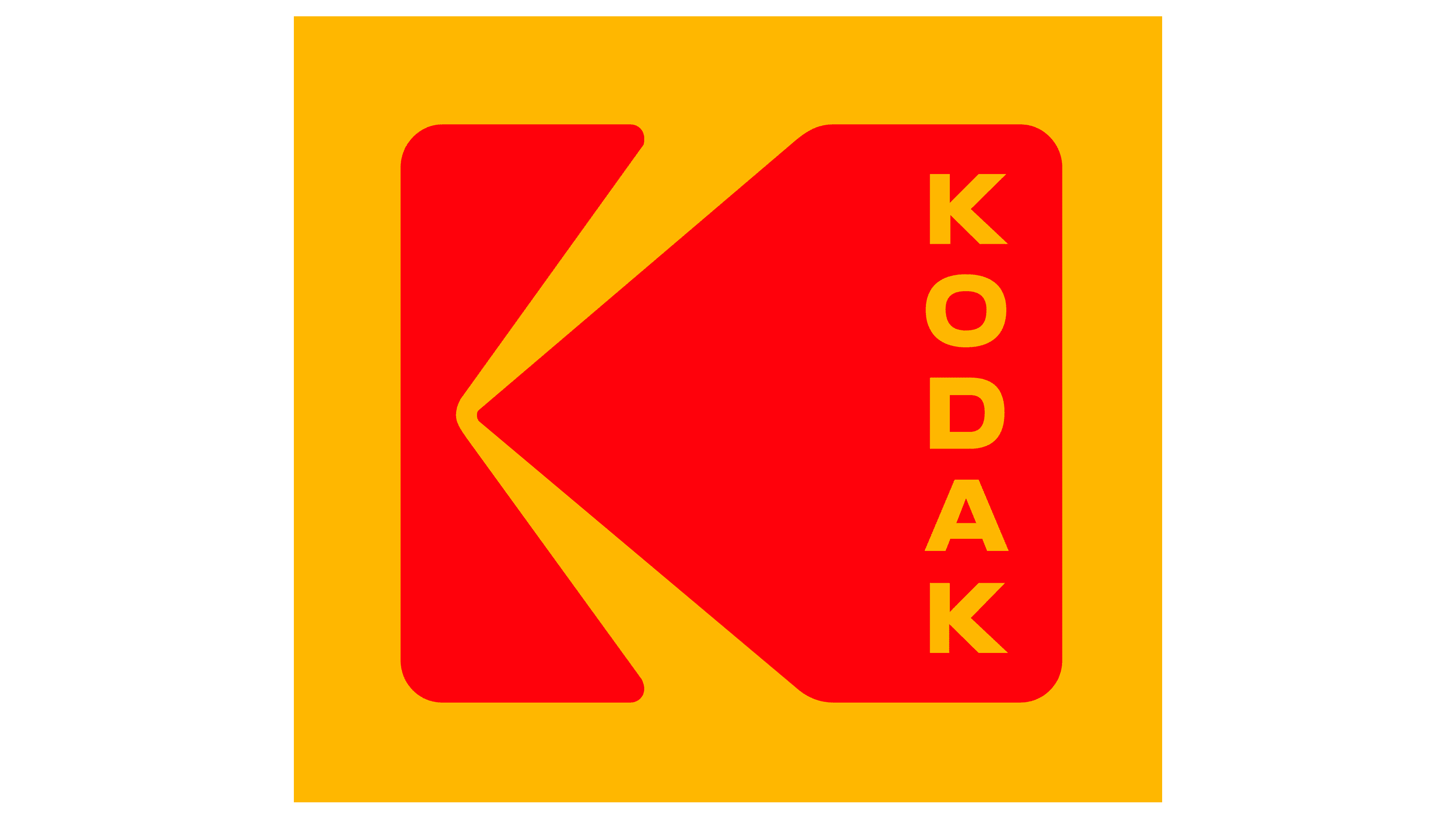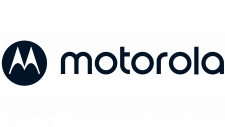Kodak Logo
Kodak, once a giant in photography, has diversified its business. Now, it focuses on commercial printing and imaging solutions. They have expanded into areas like digital printing, packaging, and software services, catering to various market needs. Ownership details are complex, with multiple stakeholders involved. Main markets include North America and Europe, but they also have a global presence. Kodak’s shift from its original focus has been a significant transformation in its journey.
Meaning and history
Kodak, a name synonymous with photography, has had a rich and tumultuous history. Founded in 1888 by George Eastman, Kodak revolutionized the photography industry with the introduction of the first simple cameras, making photography accessible to the general public. The company thrived in the 20th century, becoming an iconic brand known for its film rolls and cameras.
However, the turn of the 21st century marked a decline for Kodak as it failed to adapt to the digital revolution in photography. Despite inventing the digital camera in 1975, Kodak was slow to embrace digital technology, and the rise of smartphones with built-in cameras further eroded its market share.
The financial struggles culminated in 2012 when Kodak filed for Chapter 11 bankruptcy protection. This marked a significant turning point as the company sold off many of its patents and shifted its focus from consumer photography to commercial printing and imaging solutions.
Post-bankruptcy, Kodak re-emerged with a new strategy, focusing on digital printing, packaging, software services, and new ventures like the production of ingredients for generic drugs. The ownership of Kodak underwent changes, with various stakeholders including creditors, bondholders, and new investors having a role in the company’s direction.
Kodak’s journey from a pioneering photography company to its present-day form highlights the importance of innovation and adaptation in the ever-evolving business landscape. Today, Kodak stands as a testament to the potential for rebirth and reinvention, with its legacy in photography serving as a foundation for its new ventures.
1889 – 1907
The iconic company introduced itself to the world through an informational and promotional logo, encapsulating essential details about its brand. Kodak, in its initial stages, utilized this strategy to perfection, gathering all crucial information in a single, coherent visual representation.
At the heart of the logo, within a black vertical rectangle, the words “THE EASTMAN DRY PLATE AND FILM CO” are prominently displayed in white letters. To the left, the text “BRANCH OFFICE 155 OXFORD ST. LONDON” can be seen, while the right side features “ROCHESTER N.Y.,” indicating the city and state. The logo is further adorned with artistic design elements, including ornate leaves, dividing lines, intricate strokes, and a frame embellished with floral ornamentation.
This innovative approach was not just about creating a brand identity, but it was a testament to Kodak’s commitment to establishing a strong connection with its audience. The emblem was a visual storytelling tool that narrated the brand’s story, values, and roots, thus building a foundation of trust and recognition that would stand the test of time.
Today, the logo serves as a reminder of Kodak’s rich history and its evolution over time. It is a symbol of the brand’s resilience and its ability to adapt to the changing times while still holding on to its core values and legacy. The emblem is a timeless piece of design that encapsulates the essence of Kodak, a brand that has left an indelible mark on the world.
1907 – 1935
The inception of Kodak’s inaugural logo was a collaborative effort between its founder George Eastman and his mother, the latter having proposed the innovative idea of utilizing an anagram set. Centered around the pivotal letters “E,” “K,” and “C,” Eastman meticulously crafted a design that placed these characters within the confines of a pristine white circle, bordered by a contrasting black outline. This design choice not only stood as a testament to the brand’s attention to detail but also symbolized the cohesive unity between its visionary founder and the familial support that played a crucial role in shaping the company’s ethos.
The implementation of the circle in the logo was not just a stylistic choice; it represented the holistic approach Kodak aimed to bring to the world of photography. The circle encapsulated Kodak’s commitment to innovation, its aspiration to encompass the entire spectrum of photographic needs, and its promise to deliver unparalleled excellence in its offerings. The black and white color scheme further emphasized the brand’s dedication to simplicity and elegance, reflecting the timeless appeal of its products.
In essence, the story behind the Kodak logo is a fascinating glimpse into the brand’s origins and the values it holds dear. It is a testament to the power of family, creativity, and the pursuit of excellence. The emblem, simple yet profound, continues to be a symbol of Kodak’s legacy and its ongoing commitment to shaping the world of photography with innovation and precision.
1935 – 1987
Back in 1935, Kodak unveiled two emblematic logos that would set the stage for its visual identity for years to come. The first featured the brand name “Kodak” emblazoned in a striking red hue, complete with prominent square serifs that added a touch of boldness and modernity.
1935 – 1960
The second logo maintained the “Kodak” inscription, but this time it was encapsulated within a light orange rectangle, outlined by a stark black border. This marked the inception of the company’s signature color palette, a combination that would become synonymous with the Kodak brand and remain a fundamental aspect of its corporate identity in all future logos.
The choice of red and orange hues was not arbitrary; it was a calculated decision to portray the brand’s vibrancy, passion, and energy. These colors were intended to capture the essence of Kodak’s innovative spirit and its commitment to bringing color and life to the world of photography. The square serifs, on the other hand, symbolized the brand’s stability, strength, and reliability. They conveyed a message of trustworthiness, assuring customers that Kodak was a brand they could depend on for their photographic needs.
In essence, the introduction of these two logos in 1935 was a pivotal moment in Kodak’s history. It was a clear statement of the brand’s intention to evolve and adapt while staying true to its roots. The logos were a reflection of Kodak’s dedication to quality, innovation, and customer satisfaction, values that continue to define the brand to this day.
1960 – 1971
By the 1960s, Kodak decided to infuse a touch of innovation and modernity into its branding. The logo underwent a creative transformation, shifting emphasis to a distinctive corner curl triangle. This geometric figure was meticulously designed to resemble a folded sheet of photographic paper, symbolizing the brand’s deep roots in photography. Positioned neatly at the bottom right was the brand’s abbreviated name, adding a touch of simplicity and elegance to the overall design.
This strategic move to incorporate the corner curl triangle was more than just a stylistic choice; it was a testament to Kodak’s commitment to evolving with the times while staying true to its heritage. The folded paper symbol was a nod to the brand’s rich history in capturing memories and moments through photography, serving as a reminder of its contributions to the world of photography. It also exemplified the brand’s forward-thinking approach and its dedication to innovation in a rapidly evolving industry.
The addition of the abbreviated brand name, on the other hand, was a clear reflection of Kodak’s belief in simplicity and efficiency. It represented the brand’s approach to making photography accessible and straightforward for everyone, breaking down barriers and democratizing the art of capturing moments. In essence, the logo encapsulated the essence of Kodak – a brand that has played a pivotal role in shaping the world of photography, constantly pushing the boundaries and striving for excellence.
1971 – 1987
In a bold move that broke away from previous designs, artist-designer C. Peter Oestrich reinvented the Kodak logo, eliminating the triangle and opting instead for a contemporary square frame to house the iconic yellow “Kodak” lettering. But he didn’t stop there; Oestrich introduced an additional, visually intriguing element – a stylized graphic sign in the shape of the letter “K.” This graphic, cleverly designed to mirror the intricate pattern of a camera shutter, added depth and symbolism to the logo, transforming it into a visual ode to the art of photography.
The square frame symbolized stability and reliability, echoing Kodak’s longstanding reputation in the industry. The yellow “Kodak” lettering, vibrant and eye-catching, conveyed the brand’s energy and innovation. The “K” shaped graphic sign, reminiscent of a camera shutter, was a subtle nod to Kodak’s rich history in capturing moments and its commitment to pushing the boundaries of photography.
This reimagined logo was not just a mere representation of the brand name; it was a carefully crafted visual story that encapsulated the essence of Kodak. It reflected the brand’s dedication to innovation, its rich heritage in the world of photography, and its promise to continue evolving in a digital age. The logo, in its simplicity and symbolism, stood as a testament to Kodak’s legacy and its unwavering commitment to shaping the future of photography.
1982 – 2006
The 1982 iteration of the Kodak emblem took a minimalist and clean approach, featuring the brand name “Kodak” prominently displayed on a pristine white canvas. The typography was a stark departure from previous designs, as it utilized a straightforward sans-serif font, exuding simplicity and modernity.
This logo was a reflection of the changing times and Kodak’s adaptability. The white background symbolized clarity and purity, aligning with the brand’s commitment to delivering clear, crisp, and high-quality photographic results. The simple sans-serif typeface, free from the embellishments of serifs, represented Kodak’s straightforward approach to photography, highlighting the brand’s dedication to making photography accessible and easy for everyone.
The 1982 emblem was a testament to Kodak’s ability to evolve while maintaining its core values of innovation, quality, and simplicity. It stood as a symbol of the brand’s commitment to moving forward, embracing new challenges and opportunities in a digital age, while still holding true to its rich heritage and legacy in the world of photography. This minimalist design approach marked a significant chapter in Kodak’s history, showcasing the brand’s prowess in adapting to the evolving landscape of the photography industry.
1983 – 1987
The visual identity encapsulated in this logo marked a significant departure from Kodak’s earlier and subsequent designs, primarily attributed to its monochromatic palette that replaced the brand’s customary red and orange hues. The emblem’s silhouette was reminiscent of the 1971 logo, featuring a square shape with two converging rays that collectively formed the letter “K”. Adding a touch of dynamism and intrigue, the lower segment of the square was adorned with a striped pattern.
Beneath this geometric emblem, the brand name was prominently showcased in a jet-black hue, utilizing the same bold, sans-serif typeface that was employed in an alternate version unveiled in the same timeframe. This congruity in font choice ensured a cohesive and harmonious visual narrative, effectively encapsulating the brand’s essence.
The design was a testament to Kodak’s ability to seamlessly blend tradition with modernity, encapsulating its rich legacy while simultaneously embracing a contemporary aesthetic. It stood as a symbol of the brand’s adaptability and commitment to evolving with the times, while still maintaining its core values of innovation, quality, and simplicity. In essence, this logo was a visual ode to Kodak’s journey, a snapshot of its evolution, and a testament to its unwavering commitment to shaping the future of photography.
1987 – 2006
In a nod to its past, Kodak, in 1987, opted to revisit its 1971 logo. However, this time, it brought a fresh twist by updating the yellow lettering to a newly introduced typeface that was specific to 1987. This amalgamation of the past and the present resulted in a logo that carried the essence of Kodak’s heritage while also embracing the contemporary style of the time. This blend of the old and the new became a significant part of Kodak’s brand identity, with the company utilizing these two logos side by side for a span of nearly two decades.
The decision to marry the old logo with the new typeface was a testament to Kodak’s commitment to its roots while also being open to evolution and change. It was a reflection of the brand’s ability to adapt and evolve while preserving the core elements that defined its identity. This approach to branding was a crucial factor in maintaining a sense of familiarity and nostalgia among its loyal customer base while also appealing to a new generation of consumers. In essence, these logos encapsulate Kodak’s journey through time, symbolizing its rich history, its adaptability, and its ongoing commitment to innovation in the world of photography.
2006 – Today
In 2006, the Ted logotype underwent a significant transformation, eschewing its former typeface in favor of a more contemporary and fluid design. This new iteration saw a notable change, with only the two “K” letters retaining their sharp, angular vertical bars, while all other characters exhibited a rounded, softer bottom part. This refreshed typeface was the brainchild of the Identity Design agency, a testament to their ingenuity and forward-thinking approach.
The decision to shift to a smoother typeface was indicative of a broader trend towards minimalism and modernity, reflecting the brand’s commitment to staying relevant and appealing to contemporary aesthetics. The mix of angular and rounded elements in the logo brought a unique and dynamic quality, capturing the essence of Ted’s innovative spirit.
The collaboration with the Identity Design agency was a pivotal moment for the brand, as it marked a departure from its traditional design and a bold step towards a more progressive and modern identity. This new logo was not just a visual representation of the brand name; it was a statement of Ted’s dedication to evolution, innovation, and a future-facing approach. It showcased the brand’s ability to adapt and evolve, striking a perfect balance between tradition and modernity, and solidifying its place in the competitive landscape of its industry.
2016 – Today
In 2016, the brand revived its iconic “camera” logo, albeit with a contemporary twist in terms of style and placement of the wordmark. The once horizontal yellow lettering was given a fresh orientation, now standing tall and vertical along the right edge of the vivid red imagery. This updated text was crafted in all capital letters using a straightforward yet bold sans-serif font, lending a polished and professional aura to the brand’s visual identity.
This strategic redesign was a deliberate attempt to merge nostalgia with modernity, as the brand reached back into its rich history while also aligning with contemporary design trends. The vertical placement of the wordmark was a significant departure from convention, symbolizing the brand’s willingness to innovate and break from tradition. The use of a sans-serif typeface further emphasized the brand’s commitment to a clean, modern aesthetic, while the bold capital letters conveyed a sense of confidence and seriousness.
In essence, this new logo was a testament to the brand’s ongoing evolution, reflecting its dedication to staying relevant and appealing to a diverse audience. It represented a fusion of the brand’s storied past and its ambitious vision for the future, encapsulating its commitment to quality, innovation, and professionalism.






















